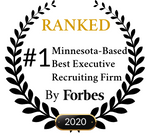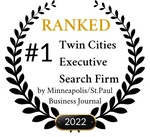
Over the past several months, a handful of major U.S. companies have announced "Return to the Office," aimed at bringing back the traditional workspace dynamics that served them well pre-pandemic. Each time I read one of the headlines, I am struck by the fact that these directives occur in the midst of increasingly compelling data suggesting that remote and hybrid work models are becoming the standard, not the exception. From what I see as an executive recruiter, turning back the clock doesn't seem to work very often.
If you doubt me, check out Two Beers, the Pandemic and a Workplace Revolution" from the Stanford Institute for Economic Policy Research. It's a brief, compelling summary of today's WFH and hybrid trends, based on the findings of two pioneers in remote work research, Stanford economists Nicholas Bloom and Steven Davis. Bloom and Davis saw this trend emerging long before COVID-19. They recognized, even back then, that remote work was the way of the future, not a blip on the industry radar.
The evidence is irrefutable: hybrid is here to stay. Employees who work in a hybrid model, splitting time between remote and on-site work, report higher job satisfaction, improved work-life balance, and improved mental and emotional health. But that's not the only reason this trend will continue. In addition to the obvious link between employee satisfaction and retention, hybrid work also increases productivity and performance while reducing commuter traffic (which helps lower environmental impacts).
In spite of these facts, some employers continue to resist remote and hybrid.
Do you remember Ctrip, the Chinese travel agency?
Do you remember Ctrip, the Chinese travel agency so often cited for their 2011 experiment with remote work? Bloom was one of the researchers involved in that study. The study found that employees working remotely experienced a notable increase in job satisfaction and productivity compared to their office-bound counterparts. Their reasons were obvious. Ctrips remote workers were happier, citing the flexibility and convenience of working from home as major contributing factors to their improved motivation and output. The study was fascinating. But is was small. While it made headlines, few U.S. employers interpreted it as a bellwether. Then covid came along.
13 years later: an update on the Ctrip experiment...
Earlier this year, the research team led by Stanford's Nicholas Bloom revisited the Chinese travel agency to examine how the dynamics of remote work may have shifted for Ctrip since their initial study. Significantly, all of the positives uncovered in 2011 had remained consistent. Back in 2011, Ctrip's remote workers were more often passed over for promotions than their on-site counterparts.
Only one thing that changed. Ctrip had figured out how to fully fix their career pathing process to include remote workers. It worked. In the 2024 study, their remote workers are no longer experiencing reduced opportunities for promotion.
A growing body of evidence supports the anecdotes.
The latest Working from Home (WFH) research data, sourced from a monthly survey conducted by the University of Chicago, ITAM, MIT, and Stanford University, further supports the steady integration of hybrid work models among American workers. Today, approximately 38% of U.S. workers are engaged in hybrid work arrangements.
Within the success stories and data, there is a lesson here for us all.
Tomorrow's hiring wars will be won by today's early adopters
Ctrip's experience underscores what many of us in the employment industry are noticing. For most employers in many industries (with obvious exceptions), remote and hybrid work is not only logistically possible. It also yields better performance, deeper employee engagement, and higher retention of top performers. So why are some employers tempted to throw in the towel to make it work?
Managing a remote and hybrid team demands a set of management and leadership skills that are qualitatively different from those that were successful with onsite-only organizations. Getting there demands an acceptance of that fact and an investment in those now-necessary management capabilities. That doesn't always mean hiring new managers. Sometimes, it simply means training your team on the technologies, communications, coaching, and recognition that sustain high performance.
It's Not About "Letting" Your Team Have Hybrid. It's About Creating Superior Hybrid Workplaces.
Those organizations who have already made those investments are quickly breaking away from those who refuse to do so. Their employees are performing at or above the levels of their on-site counterparts. They are engaged with their managers and their teams -- because their managers either already know how to use the latest online tools for building and sustaining that engagement or they're willing to learn and change accordingly.
These are the organizations that will become better and better at attracting top talent and retaining them. These are also the organizations that will be ready to seamlessly adapt to the next unforeseen event that disrupts their 100% onsite counterparts.
At SkyWater Search Partners, we see what works and what doesn't in the hybrid vs onsite-only battle. We also know what it takes to recruit the most highly qualified candidates successfully and why those candidates often choose the employer that provides hybrid opportunities, even when doing so means earning a little less.
To discuss how you can compete in this evolving talent pool, reach out to us. We would love to speak with you!







